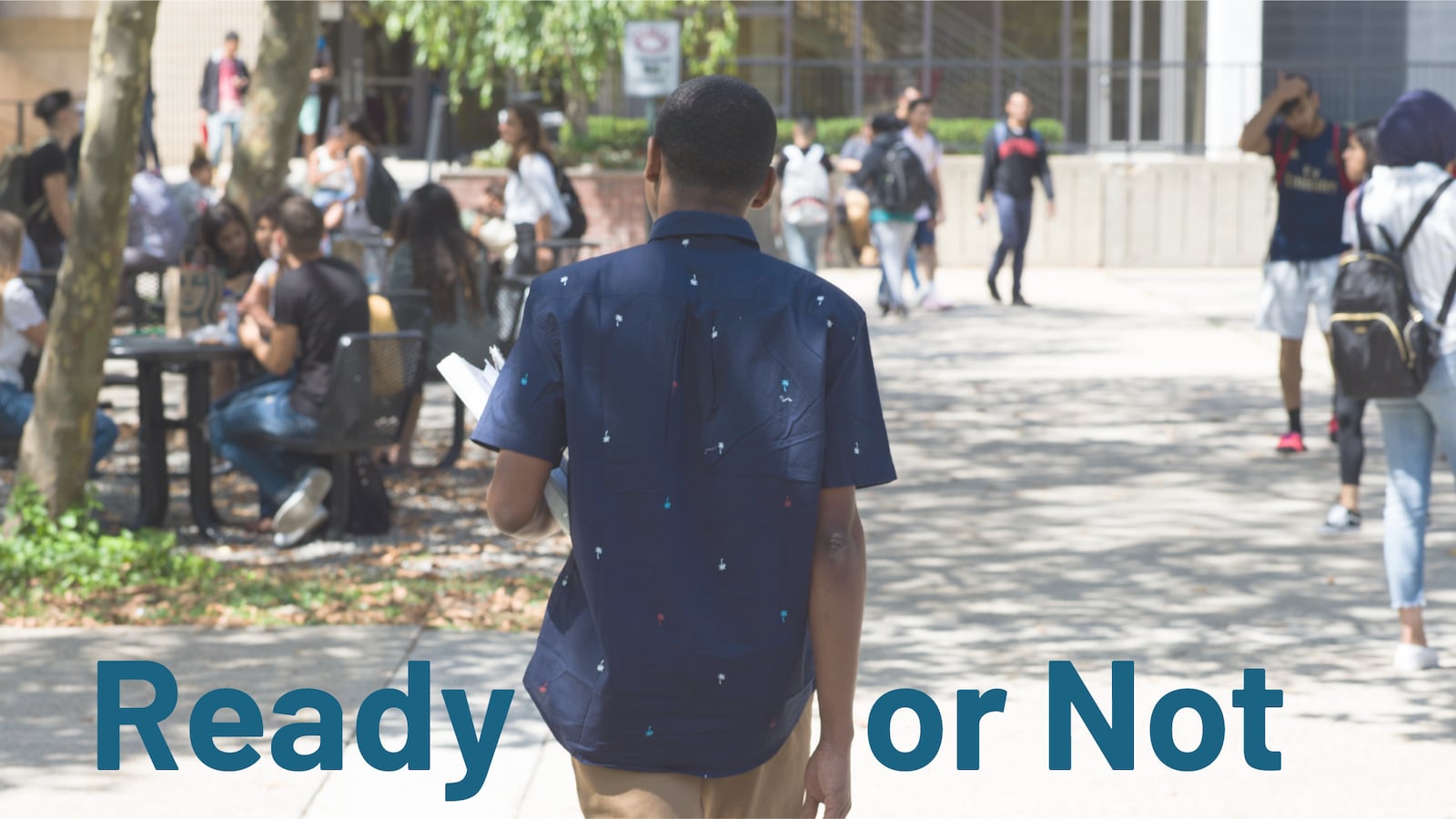When Yamin Reddick and Marqell McClendon graduated from high school this spring, they began an increasingly common journey — but one with an uncertain destination.
For all the talk about whether college is worth its potentially crushing costs, graduating from college remains one of the only vehicles that reliably propels Americans out of poverty. College graduates earn more and are less likely to live in poverty than Americans with just a high school diploma. And while 45% of children who are born into poor families and don’t finish college stay poor as adults, just 16% of poor children who get degrees remain poor.
Lured by the promise of a better life, more and more students are pursuing degrees. Each fall, about two-thirds of high school graduates and GED-getters head off to college. Like the country’s population, today’s college-going students are more racially and ethnically diverse than in the past, and include more low-income students among their ranks.
Institutions are great at enrolling students — they’re not great at graduating them.
But attending college is one thing; graduating is another. Nationally, only 60% of students who enroll at four-year institutions earn a bachelor’s degree within six years. That is the average for all students — the six-year college graduation rate is much lower for black students (40%), Hispanic students (55%), and low-income students (49%).
And for students in long-struggling cities such as Newark and Detroit, the statistics can be even bleaker.
In Newark, for example, just 44% of students who head straight to four-year colleges after high school earn a bachelor’s degree within six years, according to researchers who analyzed a sample of district, county, charter, and private high schools there. Among traditional, non-selective high schools such as the one Reddick attended, just 16% of graduates who immediately enroll in college earn bachelor’s degrees six years later.
In a new series, Ready or Not, two Chalkbeat journalists have set out to understand what those statistics mean for students like Reddick and McClendon — accomplished, driven young adults facing especially long odds in their quest for a college degree.
In Newark, Patrick Wall will be chronicling Reddick’s efforts to succeed at Rutgers University-Newark, which has won accolades for its support for low-income students. Lori Higgins is telling the stories of four Detroit graduates who have dispersed across Michigan to three public and private universities in their own quests for college degrees.
Our goal is to shine a light on the complex dynamics that are causing a “college completion crisis,” as a report by the Education Trust, an advocacy group focused on educational disparities, calls it.
Those dynamics include:
- Segregated and under-funded K-12 school systems that struggle to prepare low-income students of color for college.
- Structural racism that leaves a higher share of black and Hispanic families in poverty, forcing many of those young people to work more hours in college and live off campus, all while shouldering a higher share of higher-education costs, relative to income, than their affluent peers.
- Elite colleges, which spend the most to educate their students and achieve stellar graduation rates, yet admit very few poor students.
- And non-elite institutions — less selective four-year colleges, for-profit schools, and two-year colleges — which enroll the most poor students and students of color, and generally have far lower graduation rates.
“Institutions are great at enrolling students — they’re not great at graduating them,” said Wil Del Pilar, vice president of higher education policy and practice at the Education Trust. “When we create access, but we don’t ensure completion, we’re guaranteeing a promise unfulfilled.”
Nowhere are these dynamics more pressing than in Detroit and Newark. The local school districts are undergoing rapid changes after recently returning to local control after years of state management. And both cities have robust sectors of privately managed, publicly funded charter schools that are trying to boost their students’ odds of success. But even for the most ambitious students, years of bureaucratic tumult, poor academic preparation, and challenges in their own lives make success in higher education a difficult prospect.
Over the coming months, Lori and Patrick will share snapshots from local students’ first year of college, pull together data that illuminates disparities that begin long before students get to college, and profile efforts to improve the college transition.
We’ll also be involving our readers in an ongoing conversation about college readiness and completion — and sharing some snippets from behind the scenes of our Ready or Not reporting. Sign up below to join the conversation.
We’re talking about the future of our country, not just the future of a couple of kids.
The obstacles standing between the students and a college degree are daunting. But each of these students is armed with formidable intelligence and tenacity. And, in varying ways, their colleges and former high schools are trying to find ways to help get them to graduation.
Whether they succeed will determine the trajectory of these students’ lives. And, on a grander scale, whether more students like them can make it through college will show whether the country is ready to head in a more equitable direction — or not.
“We’re talking about the future of our country, not just the future of a couple of kids,” said Vincent Tinto, a professor emeritus at Syracuse University and an expert on higher education. “We’re talking about generating a future citizenship that’s diverse and representative, that becomes a powerful force in our society.”
This project was produced with support from the Education Writers Association Reporting Fellowship program.



